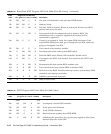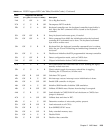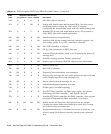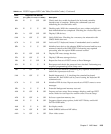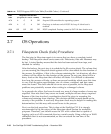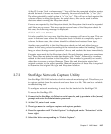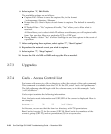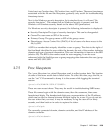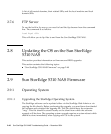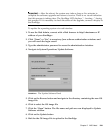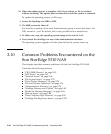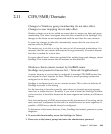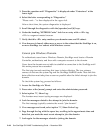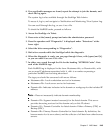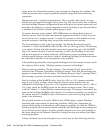
Chapter 2 NAS Head 2-39
Listed next are Creation time, FS Creation time, and FS mtime. These are timestamps
associated with the file and the filesystem, generally only useful for troubleshooting
timestamp issues.
Next is the Windows security descriptor. In its simplest form, it will read “No
security descriptor”. This means that no Windows security is present, and that
Windows will simulate security based on the above NFS permissions.
If a Windows security descriptor is present, the following information is displayed:
■ Security Descriptor:The type of security descriptor. This can be disregarded.
■ Owner:The user name or SID of the owner.
■ Primary Group: The group name or SID of the group owner.
■ Discretionary Access Control List (DACL):A list of users who have access to the
file, by SID.
A SID is a number that uniquely identifies a user or group. The data to the right of
the final dash identifies the user within the domain; the rest of the number indicates
domain and type of account information. This user information is known as the RID
(relative ID). The RID is the number used for user mapping. It can be cross-
referenced with the StorEdge user or group mapping data determine the user/group
name and NFS UID/GID.
2.7.5 Proc filesystem
The /proc filesystem is a virtual filesystem used to collect system data. The location
of some of the more useful data is listed below. To collect the data, copy the file, or
use the “cat” CLI command to dump it to the screen while logging the terminal
session.
/proc/cifs/DOMAIN.USER.6789ABCD…
These are user access tokens. They may be useful in troubleshooting SMB issues.
These file names begin with the domain name, then the username, then some
hexadecimal digits. The hexadecimal digits are a representation of the IP address,
which can be used to discern between multiple logins for a user. If you do not see
the user token that you need, it may be necessary to log the user off for thirty
seconds, and then back on in order to capture the token.
/proc/cifs/pdc
The currently connected domain, domain controller, and the IP address of the
domain controller.
/proc/cifs/ntdomain




